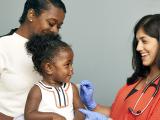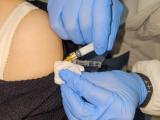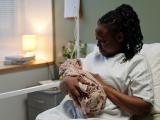Apr 18, 2011 (CIDRAP News) – A World Health Organization (WHO) working group on influenza virus sharing capped off a week of negotiations with a final agreement that establishes a framework for sharing vaccine strains alongside a system for improving the flow of pandemic vaccine and medications to developing countries.
The WHO said yesterday that the group, which was slated to end deliberations on Apr 15, worked through the night and into the next morning to finalize the agreement, which has taken them more than 3 years. They will present the framework for World Health Assembly consideration and approval in May.
Controversy over the global sharing of influenza viruses, a key component of pandemic preparation, came to a head in 2006 when Indonesia, which has reported the most H5N1 avian influenza infections sand deaths, started withholding its virus samples as a protest against the high cost of commercial vaccines derived from such samples.
Issues that hobbled earlier negotiations included how to handle material transfer agreements for virus samples that countries send outside their borders, intellectual property rights, transparency of WHO labs that handle the viruses, and how to set up a system to ensure that developing countries have greater access to vaccines and medications that are based on the virus samples they provide.
Negotiations have required the working group to balance the risky, time-consuming, and costly process of pandemic vaccine development by pharmaceutical companies against access and affordability of the products for poorer nations.
Pact clarifies rights, roles
The WHO said the framework includes binding legal processes for the WHO, national influenza labs, and industry partners in both developed and developing countries. The new agreement more clearly spells out roles and obligations, including the use of contracts, to increase and speed access to crucial vaccines, medications, and diagnostic tests, particularly for lower-income countries.
It said the agreement better positions the world to respond to seasonal and pandemic flu threats, because it includes measures for strengthening lab capacity and surveillance, along with contributions from pharmaceutical companies.
WHO Director-General Dr Margaret Chan said in a statement that the journey that led to the agreement is a big victory for public health. "It has reinforced my belief that global health in the 21st century hinges on bringing governments and key stakeholders like civil society and industry together to find solutions," she said.
Dr Keiji Fukuda, assistant director-general of health security and environment at the WHO, said in the statement that the framework delivers a more coherent and unified global approach to ensure that the WHO can monitor influenza and help develop key vaccines and antivirals, and at the same time ensures access for developing countries.
When the working group's negotiations stalled last year, the WHO asked members Bente Angell-Hansen from Norway and Juan Jose Gomez-Camacho from Mexico to take over leadership to get the talks moving again. In recent months the group sought input from nongovernmental organizations, especially those that represent the interests of developing nations, and industry.
Angell-Hansen said in the statement that the agreement reflects a unique partnership with industry, along with concrete measures. "I am grateful to the very many who contributed to this positive outcome. It demonstrates what we can achieve through health diplomacy in WHO," she said.
Pharma's role in negotiations
The International Federation of Pharmaceutical Manufacturers and Associations (IFPMA), a nonprofit group that represents pharmaceutical and biotechnology companies, said in a statement today that it supports the framework and looks forward to seeing the working group's final report. It said the framework appears to include the IFPMA's offer of support to the WHO's Global Influenza Surveillance Network, as well as its members' allocations of vaccines and antivirals for developing countries to use during the next pandemic.
The IFPMA said its allocation builds on its donations in response to the 2009 H1N1 pandemic, and that its members have pledged to reserve at least 10% of pandemic vaccine and antiviral manufacturing capacity on a real-time basis for WHO donations and tiered-pricing supplies.
The group said it recognizes how important it is for developing countries to build their own pandemic vaccine capacity and will continue to support projects in several countries such as Mexico, China, and Indonesia that are already under way. The IFPMA also said individual members are willing to do more to boost production capacity and, when feasible for countries, permit access to reverse-genetics technology.
The agreement appears to navigate tough intellectual property issues, the IFPMA said, adding that it will ensure that they don't pose a barrier during the next pandemic and that it will consider flexible approaches, when appropriate, for meeting that goal.
Eduardo Pisani, director-general of the IFPMA, said in the statement that governments can play an important role in easing access by ensuring that vaccines reach their populations, an effort that should include adopting seasonal influenza immunization policies. "This would need to be accompanied by regulatory procedures, country surveillance, health system infrastructure, and rules for transfer of viruses to build on the significant contributions to the global pandemic made by IFPMA members," he said.
Draft spells out details
The unedited 43-page version of the agreement that the WHO shared with journalists today sets forth expectations for timely sharing of flu viruses such as H5N1 that have pandemic potential and requires that samples contain viable material and are accompanied by clinical and epidemiologic information needed for risk assessment.
The new agreement directs the WHO to establish a transparent electronic system to track the movement of virus samples in real time. It also includes two material transfer agreements, one covering viruses sent to WHO laboratories and one for other entities.
A benefit-sharing system included in the agreement presses member states to call upon their resources to provide pandemic surveillance and risk assessment, assist with capacity building efforts, and prioritize—on the basis of transparent guidelines—pandemic vaccines and antivirals for developing countries, especially the ones that are most affected and don't have the ability to produce or access countermeasures.
The agreement does not appear to include a payment to developing countries for the pandemic viruses they share, a suggestion floated during earlier negotiations by Indonesia's former health minister, Siti Fadilah Supari.
Several passages spell out the WHO's role in coordinating pandemic preparedness and response, such as making rapid risk assessments, providing technical assistance to countries to enhance surveillance capacity, and providing pandemic vaccine candidate viruses without preference and to any lab that asks, as long as they meet biosafety guidelines and use best biosafety practices.
The agreement calls on the WHO to work with other agencies and donors to develop a stockpile of antivirals and other equipment to contain pandemic outbreaks.
An initial stockpile of 150 million doses of H5N1 vaccine, contributed by vaccine companies and other donors, would include 50 million doses for affected countries, according to risk and need, to help stem the spread of the virus early in the outbreak. The other 100 million doses would be earmarked to help developing countries, once the pandemic begins, based on need and population size.
To oversee the agreement, the draft stipulates an oversight mechanism that includes an independent 18-member advisory group representing all WHO regions to monitor and ensure implementation.
See also:
Apr 17 WHO news release
Apr 12 CIDRAP News story "WHO group renews push for pact on virus-sharing, pandemic vaccine access"



















